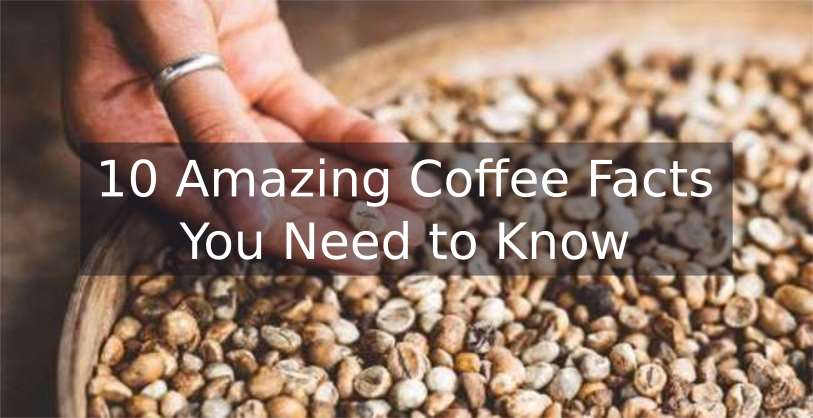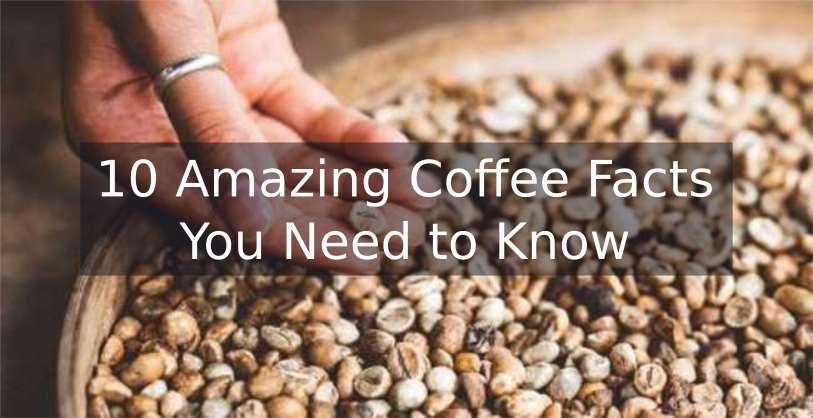
Check out these 10 coffee facts you may or may not know and discover more about the humble bean. It's truly amazing!
1. A goat herder in Ethiopia discovered it
Yes, legend has it that purely by chance an Ethiopian goat herder called Kaldi discovered that his goats were more energetic than normal after eating the fruit of a particular shrub. Some local monks then began using it to stay awake through the night while they were studying.
We thank you, Kaldi, for discovering the truly wonderful coffee bean!
2. It's actually the seed of a fruit
The coffee bean isn't a bean at all but a seed of the cherry fruit of the coffee tree (actually a shrub) of the genus caffea. There are actually two beans inside the cherry - as each "bean" is one half of the seed. The cherries are produced by the plant usually once per year and typically harvested by hand - certainly speciality coffee beans are - because they don't all ripen on the plant at the same time. The outer pulp is removed by washing or air-drying and the resulting coffee seeds are dried out until they have a moisture content of about 12%.
3. The two main types are: Arabica & Robusta
Arabica is the most common coffee bean and has the better flavour. Robusta is, as the name suggests, much more tolerant of pests and diseases, but is not as nice to taste. Robusta contains a much higher level of caffeine than Arabica and is commonly used in instant coffee. It is also contained in some espresso blends because it increases the amount of crema (froth) on the head of your Italian style espresso and gives it more body. Here at Pebble & Pine we only serve you Arabica beans because they just taste better.
4. It's mainly grown in the Tropics
The coffee growing region is between the Tropic of Cancer and the Tropic of Capricorn. The coffee plant prefers a stable climate with plenty of rainfall and reasonably constant temperature. The plants die if the temperature drops below freezing point. However, although they like plenty of water they also require a lot of drainage. Coffee trees are therefore planted on mountainsides and at high altitude, where the slope allows the rain to run off and it's not too hot.
5. The word "coffee" is derived from the Arabic "qahhwaat al-bun"
The Arabic name is translated as "wine of the bean" and is certainly a good name for it. Coffee is like wine in many ways, in that there are so many variations and origins to choose from. It really is a diverse beverage. So how did it get from this Arabic name to the word coffee of today?
- Qahwah - The Arabic shortened version of qahhwat al-bun.
- Kahveh - As coffee spread to Turkey (the Ottoman empire at the time) it was called "kahveh". It happened to be the Turks who discovered that roasting the beans made them taste better!
- Koffie - The Dutch began trading in coffee and called it "koffie", as they do.
- Coffee - The English form was derived from the Dutch. We had to change something!
6. About 150 litres of water are used to produce the beans for one cup
Water is used a lot in the production of green coffee beans (in the raw, un-roasted form they are called "green"). Not only is it used to keep the plants alive but it's used a lot in the process to remove the fruit pulp. Some countries, such as Brazil, have developed techniques that preserve precious water supplies. The pulped natural and honey processing techniques use much less water but have to be monitored much more carefully to ensure the beans don't rot.
7. Brazil is the largest exporter in the world
With about 30% of the world's total output, Brazil is by far the largest exporter of coffee. However, it's only in recent times that they've started producing high quality speciality coffee beans. They now produce some truly stunning coffee. They also tend to use the natural process, which is particularly good for espresso coffee. Therefore Brazilian coffee beans have been used a lot as the basis for many espresso blends.
8. The world consumes over 2 billion cups every day
At the last count I think it was 2.25 billion. That is a truly astonishing figure and a lot of coffee! Just in the USA alone over 400 million cups of coffee are consumed daily. In the UK it's a more conservative 55 million cups, but it's growing and is fast displacing tea as the beverage of choice in the UK.
9. The top coffee drinkers in the world?
Well, news just in (well almost). It used to be the Netherlands but they've dropped down the rankings a bit since the last study. So who drinks the most coffee per head of population? Actually it's (drum roll)... Finland!
Yes the caffeine loving Finns consume a hefty 12kg of coffee beans per person each and every year. They are closely (well, not actually that close) followed by Norway with 9.9kg and Iceland with 9kg. It must be down to those long nights in the winter!
If you're still, vaguely, interested, the US comes in at number 26 in the rankings and the UK at 45.
10. Decaf is not 100% caffeine-free
The raw coffee beans contain caffeine. There's no getting round it (although some are working on a caffeine-free type of coffee bean). So, in order for you to get your skinny decaf latte, somebody has to go and remove the caffeine. This is actually a simple process that involves (a) chemicals and (b) time. Decaf coffee used to be made by infusing the bean with toxic chemicals, but they don't tend to do that now. Pesky food standard regulations! (although in actual fact, chemicals such as Dichloromethane that are mildly toxic and carcinogenic are still allowed under US regulations).
A new technique, called Swiss Water decaffeination, was invented to solve this problem. This technique involves soaking the beans in green coffee extract. This water-based extract is essentially a liquid form of coffee bean but without the caffeine. By a process of osmosis the caffeine molecules migrate from the bean to the extract but everything else inside the bean stays the same.
Of course, given enough time all the molecules may transfer across. But nobody has that amount of time so some caffeine is always left behind. The European regulations are much stricter than the US regulations for the amount of caffeine in decaf coffee. In Europe, the amount of residual caffeine should be no higher than 0.1% of the original caffeine content. In the US it is 0.3%.

